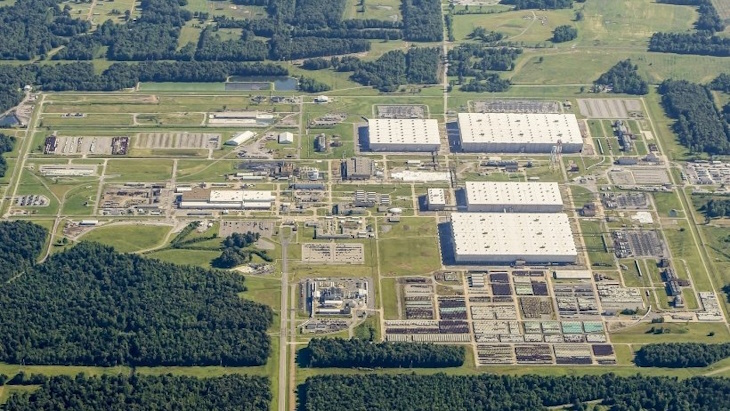Source: https://www.world-nuclear-news.org/Articles/GLE-laser-enrichment-on-track-for-2024-demonstrati
The owners of the Global Laser Enrichment (GLE) joint venture have agreed to double project expenditures in 2024 to accelerate demonstration of the SILEX laser enrichment technology at its Test Loop pilot facility in the USA this year.
Australian company Silex Systems Ltd, which owns 51% of GLE, and Canadian company Cameco, which owns 49%, have approved plans which include an increase in expenditures to up to USD54.5 million in calendar 2024, Silex has announced. In addition to accelerating the technology demonstration project - which GLE anticipates completing this year - this will allow GLE to progress other key commercialisation activities, including site acquisition activities at Paducah, Kentucky, where commercial operations at the planned Paducah Laser Enrichment Facility (PLEF) could begin "as early as 2028", the company said.
"Specifically, GLE's CY2024 plan and budget supports the completion of the technology demonstration project, continued pursuit of government and industry support and funding opportunities, site acquisition activities related to the planned PLEF, preparation of the PLEF NRC license application, completion and commissioning of GLE's new facility in Wilmington, NC, and activities to support manufacturing readiness and supply chain development," Silex CEO Michael Goldsworthy said. "These activities provide the potential for GLE to deploy the SILEX uranium enrichment technology in a timely manner to help address the forecast supply gap in nuclear fuel markets in the coming years."
GLE is the exclusive worldwide licensee of the SILEX laser technology for uranium enrichment. The US Department of Energy agreed in 2016 to sell GLE around 300,000 tonnes of depleted uranium hexafluoride to provide the feedstock for PLEF to produce uranium hexafluoride (UF6) equivalent to natural uranium over three decades, with the output to be sold into the global uranium market. The plant's annual output of up to 5 million pounds of U3O8 (1923 tU) is equivalent to one of today's top-ten uranium mines by production volume, GLE says.
The multipurpose PLEF plant has three commercialisation options: the production of natural grade UF6 (containing 0.7% uranium-235) from the processing of depleted uranium; the production of low enriched uranium (LEU) containing up to 5% U-235 and so-called LEU+ (with U235 assays from 5% to 10%) from natural UF6 to supply enriched uranium fuel for existing reactors; and the production of high assay LEU (HALEU) (up to 20% U-235) to supply fuel for next-generation advanced small modular reactors.
"Subject to the successful completion of the pilot demonstration project, industry and government support, a feasibility assessment for the PLEF and market factors, the SILEX technology could enable GLE to become a major contributor to nuclear fuel production for the world's current and future nuclear reactor fleets," the company said.
The US Department of Energy-owned Paducah site was home to the Paducah Gaseous Diffusion Plant, constructed in 1952 to produce enriched uranium. The plant ceased commercial operations in 2013, and the site is now undergoing a remediation programme. The Department of Energy has been pursuing environmental cleanup goals at the Paducah site since 1988, spending more than USD more than $2.5 billion on cleanup projects since 1990.
